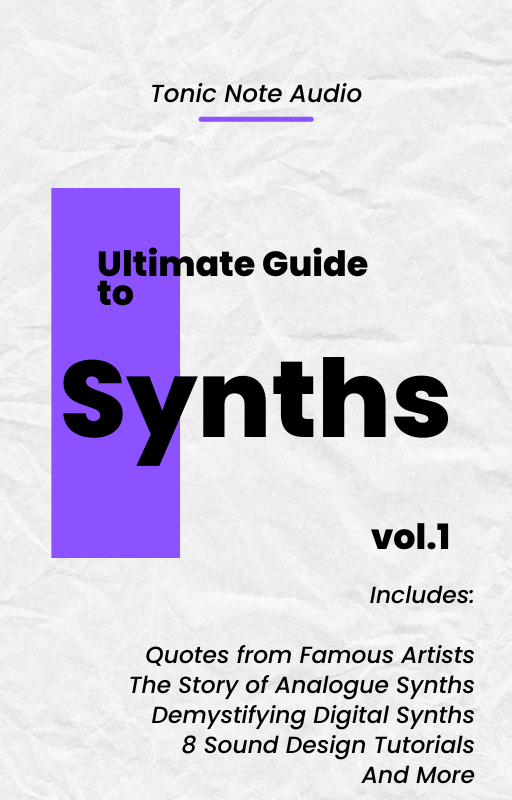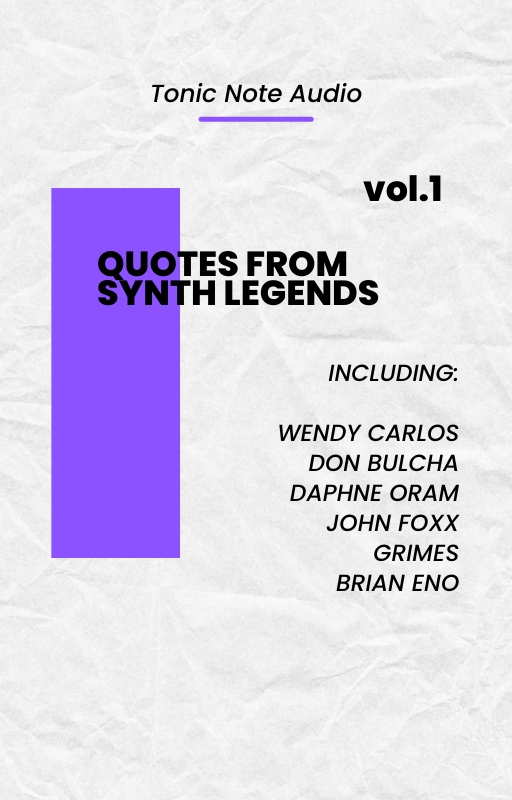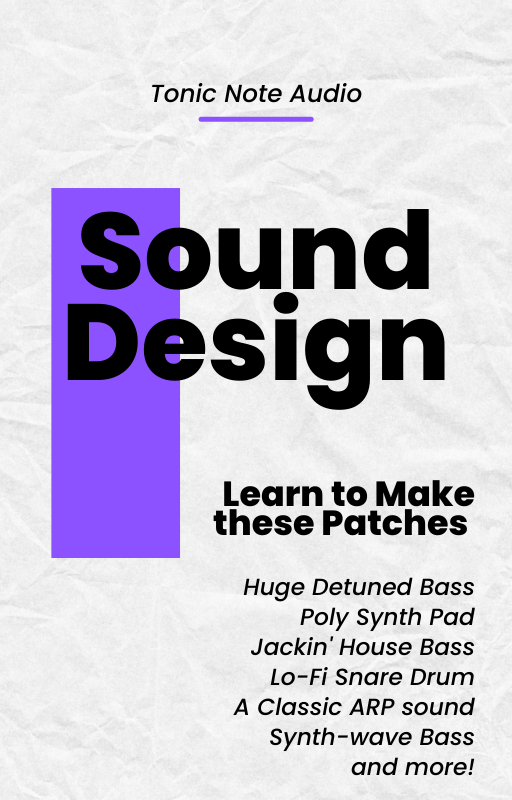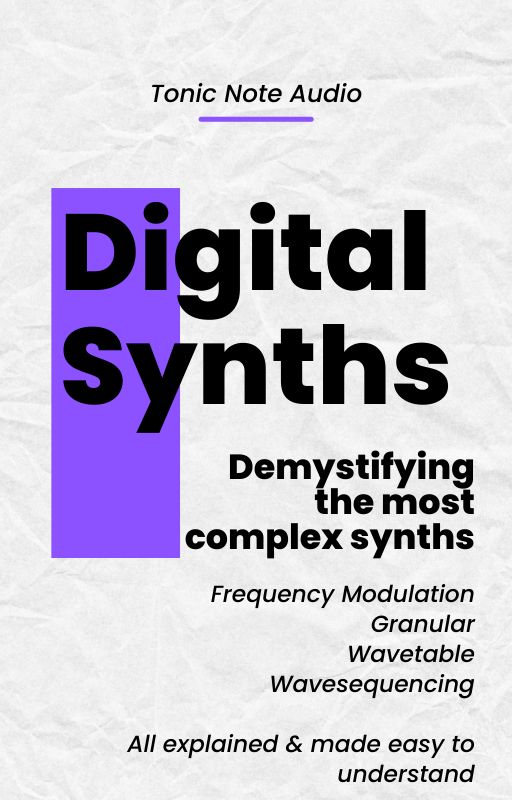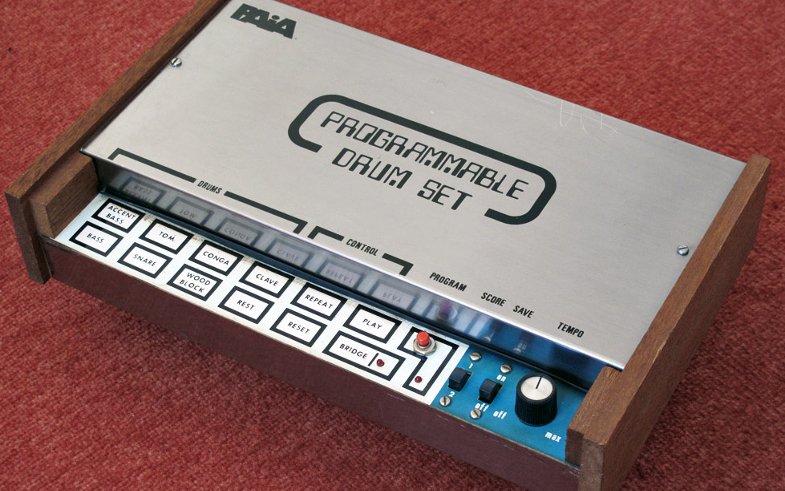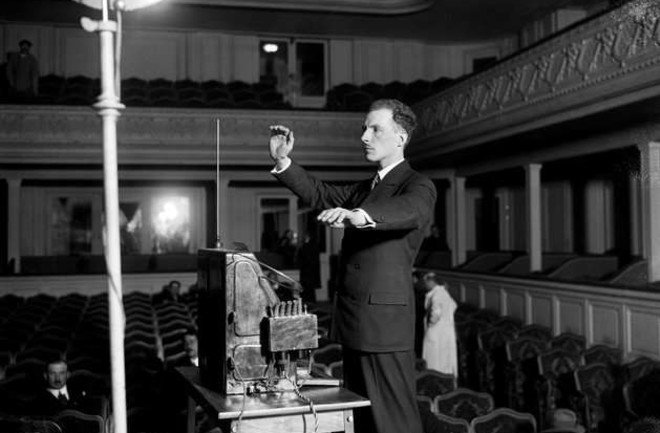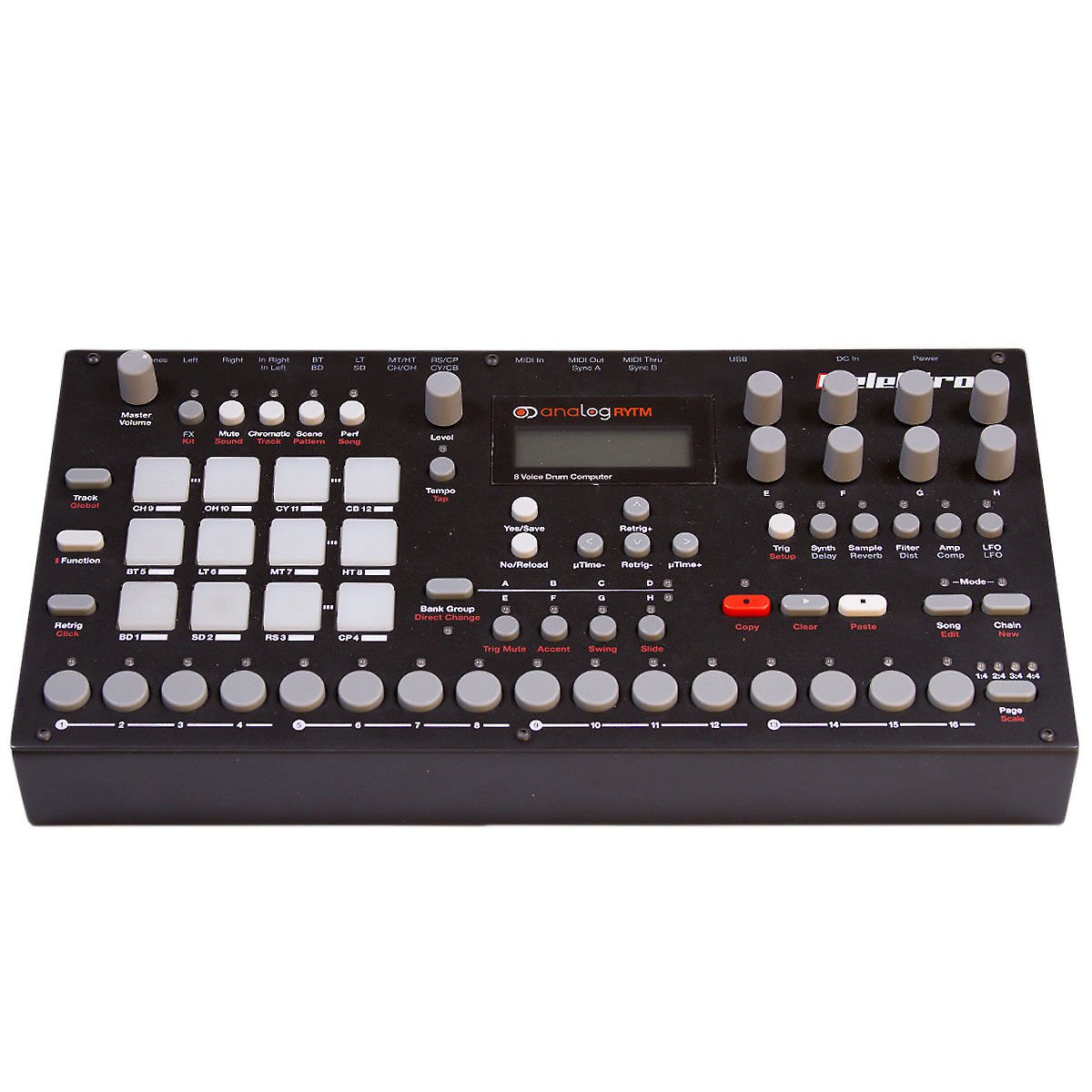A full track on the Korg Kaossilator?!
I’ve had this gadget for almost FOURTEEN years now!!! You can probably pick one up on eBay for the price of a Boots Meal Deal (other meal deals are available).
I’d never seen anything like it at the time, and when we used it in our band at a working mens club in the Highlands, it pretty much felt like the future was here for us and the audience! So it’s safe to say I have a soft spot for this bit of equipment.
In this video, I give you a full demo of the Kaossilator, and also challenge myself to make a full tune on it. Enjoy!
Also, we have our FREE Studio Launch Party on June 10th
Institute Studios, Margate,
with loads of interactive activities,
check it out with the button below
Register below to get your FREE “Ultimate Guide to Synths” eBook
Electronic Music School Launch Party!
On Friday the 10th June, we will have our Open Studio Party in collaboration with Institute Studios, who are the incredible venue for our Music Production Courses!
This FREE event will run from 8PM - 10PM, but to be guaranteed entry, please register interest below
The event includes
- Interactive Music Making installation guests can play on
- Live Electronic Music Performances & DJs
-Spoken word with ambient electronic music
- Music Production Challenges to watch
- Music Production Networking
- Projections showing art and video captured from our 5 year history
and most importantly...
- Free cookies from the artisan cookie shop that is next door!
Register Interest for the Event, and get your FREE Ultimate Guide to Synths eBook
Interested in what the Music Making Installation looks like? Take a look at it’s prototype, from 2018.
This was debuted at Soma Records, all day festival called Soma Skool. Since then it has been improved and people have enjoyed playing on it at Paradigm Electronic Arts Festival and The National Gallery of Scotland’s Family Days event!
The video below shows how you too can configure a game pad to work with Ableton!
Want to check out a good video/ visualiser plugin for Ableton for visuals like you see in the installation? Check the image to check it out
Field Recordings in Your Music Production
There are loads of good reasons to add field recordings in your music production! In this free training video, I detail 7 of my favourite field recording tips.
If you scroll past the video, I’ve also written a mini blog that has more tips on sounds to look out for.
One main thing to remember you don’t have to have a fancy field recorder device to do this - you can use the recorder in your smart phone, or buy a cheap dictaphone off eBay to get yourself going!
Also, remember we have our FREE Launch Party on June 10th, at Institute Studios, Margate, with loads of interactive activities, check it out with the button below
Register below to get your FREE “Guide to Synths” eBook
I hope you enjoyed the above video about adding field recordings to your music.
The main benefit of doing this is to add unique sounds to your music, that only you have. This will also make your music more personal and tell your story, because it is you who has got these sounds from your environment.
One problem with field recordings can be wind noise. The worst of the rumble you get from wind (and passing lorries etc) lies in the low frequency range. So if you use EQ to cut away the lower frequencies below 150Hz approx, that should help reduce the negative impact of the sounds you don’t want in your mix.
If you have already started working on a track, It’s good to listen out for sounds that match the vibe of the music you’ve started. Usually a more industrial track will suit urban and machinery sounds. But if you’ve started an ambient piece, possibly sounds from nature and the seaside would suit it better.
Some producers actually start with capturing the field recording, and then use that as inspiration for the entire track. For example, as well as capturing ambient sounds, you can deliberately clang or whack or drop things to make sounds that you can then put into a sampler to create percussive sounds from.
Personally, I love a combination of these methods combined with other music production techniques. However, it is possible to make an entire track only using found sounds, and this is a challenge I want to set myself!
My own project, Last of the Free, heavily relies on samples and sounds from archive Scottish recordings (which I mostly got from YouTube!). However, for the next two EPs, my plan is to take a trip around the Highlands, recording many sounds along the way.
This will include interviews with family, friends and people in the community. Aphex Twin and Boards of Canada have recorded their families to add a personal touch to their music. They have warped the audio so much you might not recognise it, but because the sounds are in there, it adds a very personal touch to their music.
I’d like to try this out as well as adding full clips of poems, speeches, and interviews. A lot of the music has been started already, but I am going to let the field recordings inform the process for the other tracks too.
One main tip I want to leave you with is to do with organising your sounds…. Very quickly you can get overwhelmed with hundreds of recordings and not use any of them! Here are 2 quick strategies to combat this.
Rather than record everything cool you hear, if you are purposeful when you set out to record, chances are you might record less, but the stuff you capture will be more appropriate and useful for your project.
Also, if you quickly say what it is and where you are recording into the recorder, at the start of the recording, you can use this snippet to quickly skim through your files and immediately know what it is, rather than trying to listen hard and unravel the mystery of what sound is that again?
I hope this video and blog has helped you get inspired to use some more field recordings in your music!
Live Electronic Music Performance
I love making live electronic music! When I ran events for the Tonic Note label, live electronic music is what we focussed on. Rather than DJing, it helped us build a unique style of event, where it was almost exclusively original music you were listening to.
Below is my first full live set as my new act, Last of the Free, and also my first live set since April 2019 when I was on tour in Scotland!
I’m excited to share it with you, and if you have any questions how it all came together, or need tips yourself, just email me and I’ll get back to you!
I’ve also included a second bonus video that shows a run down of my set up. And further down I’ve written a mini blog on a whole bunch of tips about Live Performance you might find helpful. Enjoy!
Register below to get your FREE “Guide to Synths” eBook
In the below video, I give you a quick run down of how my set up is put together! Click the thumbnail to watch.
Top Tips for Live Electronic Music Performance
Here are some of my tips in a stream of consciousness style orderless fashion ha ha!
Take time to build up your library of material to work with.
If you have just finished painstakingly crafting a collection of tracks, give it some time before you build your live set. It feels weird to immediately deconstruct something you’ve worked on for so long, and then try and rebuild it live.
Choose what you’d like to do in your live set. Do you mainly want to play an instrument and play the songs true to their original arrangement? Do you want to use loads of small loops and launch them live, with FX, remixing the arrangements and improvising as you go? Or a hybrid of this with some songs like plan A and some songs like plan B?
Watch lots of live sets on youtube for inspiration. Artists I recommend to check out are:
Giorgia Angiuli
KiNK
Rachel K Collier
Legowelt
Bad Snacks
Look Mum No Computer
Ela Minus
Marie Davidson
Saytek
If you are just starting out, I would recommend using Ableton live, building your live set in there. A Midi controller will be very useful for controlling FX (I like one with lots of faders and knobs). And then slowly you can add external gear like a drum machine, or synth. But be sure to learn the equipment you have inside out so you can get the most out of it!
Try and avoid “Shiny object syndrome” of always looking for new gear or plug ins and really learn well the ones you have. It can be good to have a one in, one out policy when you buy gear. EG if you already have a mono synth… if you are going to get another similar one, you have to sell the first one unless you can really justify it!
Try not to overcomplicate your live set, it is good for it to be easy to understand and get into a flow in a noisy, low light, and distracting environment (eg club or festival)
Pack the cables relating to a bit of equipment with that piece of equipment when transporting it. Rather than a huge bundle of all the cables this allows a quicker set up and less tangles to untangle.
REHEARSE A LOT. I mean every day if you have a gig coming up. You want your set up to become muscle memory, so you can play it like an instrument and really feel the flow of the music.
This rehearsal doesn’t need to feel like a chore - I mean you got into this to play music right? So enjoy that time and dont pressure yourself for results straight away.
Once you get a bit better, if you can, record your rehearsals! Having a good example of your live mix online can help convince people to give you gigs, and you can even make it into a live ep or album.
That’s it for now, although there is plenty more advice I could probably give on this I need my pasta for lunch and to go a skate.
Follow on instagram , youtube etc for frequent content and I’ll definitely be posting more about this subject as it’s one of my favourites
Thanks!
David
Need help mixing and arranging? Watch this then…
In this free video tutorial, I share an in depth tutorial of how I arranged and mixed my track for our latest compilation. This is taken from our monthly Music Maker’s Social Club webinars.
Register below to get your FREE “Guide to Synths” eBook
Case Study: Noir Synth Pop tips & inspiration
In this free video tutorial, I share a case study of past student Andrew, and how he went from making rough bedroom demos to a fully released EP!
Register below to get your FREE “Guide to Synths” eBook
How to Keep Motivated in Music Production?
In this free Tutorial, I share the 3 main problems that demotivate music producers, and how to combat them!
Register below to get your FREE “Guide to Synths” eBook
The History of Beats
Like synths too? - Get your free “Ultimate Guide to Synths”eBook by registering below
Looking at the History of Beat Making
Humans have been bashing out beats since the dawn of time. Our bodies sync to rhythms, and we can all feel the pulse.
The reason 120bpm is the most common tempo for dance music?
That is the speed our heart pumps at an excited state (ie dancing like there is no tomorrow in your favourite club).
It's beyond the scope of this eBook to give you a full history of beat-making, but we will look at some of the landmark tools available to the modern electronic music maker, and learn some quotes from the wisest of producers.
Once we've had a look at the story of beats, this eBook then covers a plethora of tricks you can use in Ableton.
The First Ever Drum Machine
Believe it or not, the first ever drum machine was invented in 1206. Described in the text “The Book of Knowledge of Ingenious Mechanical Devices”, it was a mechanical device that used rotating pegs and levers that would trigger percussion sounds as they moved around.
Al-Jazari, the Arab engineer, came up with the idea when he lived in the country we now call modern-day Turkey. It would take centuries before the drum machine started to resemble the devices we know & love today.
By the early 20th Century, Russian engineer Leon Theremin was on a run of successes. His invention of the spooky sounding theremin - the only instrument you can play without touching it - and the first ever electronic music instrument - garnered him international success.
“I conceived of an instrument that would create sound without using any mechanical energy, like the conductor of an orchestra.
The orchestra plays mechanically, using mechanical energy; the conductor just moves his hands, and his movements have an effect on the music artistry” - Leon Theremin
This led to the development of the Rhythmicon, in 1932, which could electronically play 16 different patterns and was initially received with considerable interest, but eventually fell by the wayside.
It wasn’t until the 1970’s drum machines really found their place in popular music, so let’s fast forward to take a look at this era.
Roland's Dominance
Roland are a Japanese music technology company that are ubiquitous in electronic music's development.
The original machines they created since 1972 are coveted, and referencing the 808, 909, 707 etc has become a musical language.
Let's look at their landmark products and start to unravel this code.
CR78 (1978) - Not the company's first ever drum machine, but their first huge commercial success. The sound of this retro box is all over disco records, and even used by the new wave band Blondie. A go to for a softer sound that still has a lot of energy.
TR-808 (1980) - What other drum machine has a full length feature film about it? That should give you an idea of the importance of this box. Even if you've not heard of it, you'll have heard it on countless tracks.
"Technologies are creating previously undreamed-of avenues of expression in many different fields.
It is a wonderfully rich age for artists of all sorts." -
Ikutaro Kakehashi, Founder Of Roland, and inventor of the 808
Famous for its huge booming kick drum, snappy percussion, airy cymbals, and my personal favourite sound of all, the 808 "cowbell"
TR-909 (1983) - This pasty looking box was designed to be a punchier & more snappy sibling to it's elder 808. Originally a commercial failure, units now sell for thousands of pounds.
Check out the 909 for a filthy snare, energetic hi-hats, and a kick that punches you in the chest.
What happened when real drum sounds end up in an electronic Drum Machine?
Almost all the original drum machines generated their sounds using electronic circuits and components, and this process of creating sounds is know as analogue. You'll hear that term a lot, used to describe drum machines, and synthesizers.
Analogue sounds used to be the only available choice for producers until we hit 1982 and the Linn Drum was introduced.
Designed by Roger Linn, this was the first ever drum machine to use pre-recorded sounds of drums (also known as samples) as the sound source.
The quality of the sounds out performed anything at the time, and gained famous fans, including Prince, Billy Idol & Madonna. You'll still hear these sounds in modern tracks, especially in the synthwave genre.
“For the future, I think we’ll see the drum machine continue to evolve as a live performance instrument, as opposed to an offline production editing product.
There are some wonderful drum machine players out there with some highly evolved performance gestures.”
Roger Linn in 2013
Modern Drum Machines
The drum machines of the 21st century usually are an intuitive blend of analogue & sample based designs. Modern features like easy to use interfaces, display screens, and a large memory to save thousands of presets and loops make them an amazing, hands on tools.
Good examples are the Roland TR8-S, the Novation Circuit, and Elektron Analog rytm.
Companies like Behringer are also making exact clones of some of the original drum machines mentioned above, for a fraction of the price of the originals.
Software Drum Machines
You'll find all these features and sounds inside any modern DAW (Digital Audio Workstation). Ableton is absolutely jam packed with the sounds and features you need, so let's take a look at how you can start to make some beats on your computer right now!
Want to learn more about music production? Get your free “Guide to Synths” eBook below
Ambient Techno / Electronica Tutorial
In this free Ableton Tutorial, I show you how to make ambient techno / electronica
Register below to get your FREE “Guide to Synths” eBook
